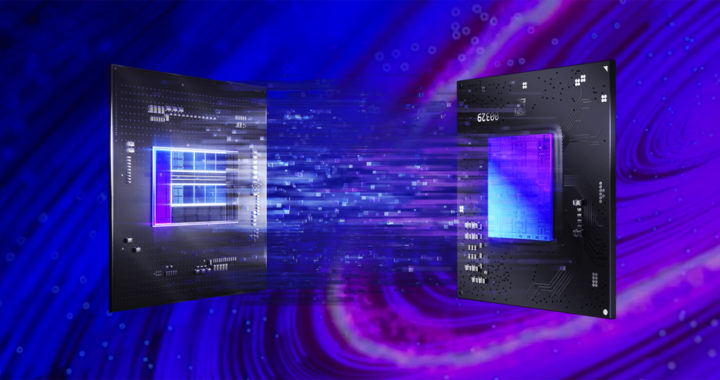Intel has struggled to compete in the graphics processor market that is dominated by Nvidia and AMD. The introduction of the Intel Xe GPU microarchitecture and the subsequent release of Intel Iris Xe in 2020 and Intel Arc in 2022 marks another attempt to build a considerable level of presence in the market. Nevertheless, this time around, Intel is capitalizing on several selling points. These include its Intel Deep Link Technology which has been considered one of the major competitive advantages of its discrete graphics processors.
What is Intel Deep Link Technology and How Does It Work: A Look Into Its Capabilities, Advantages, and Disadvantages
Intel Deep Link Technology was first introduced in 2020 alongside the introduction of the Intel Iris Xe Max discrete GPU. It was initially available on computers running the 11th Generation Intel Core processors and equipped with an Intel Iris Xe graphics processor. This technology has now become one of the main value propositions of the Intel Arc line of discrete graphics that were first launched in 2022 processors and a staple feature of newer generations of Intel Core general-purpose processors beginning the 12th Generation Intel Core processors.
Capabilities and Features
The main feature of Intel Link Technology is that it automatically coordinates the multiple processors or processing engines on an Intel platform such as the general-purpose Intel Core central processing unit, the Intel Iris Xe integrated graphics processor, and the Intel Iris Xe Max or Intel Arc discrete graphics processor.
A general example would be an application using multiple processors to improve performance and efficiency. Specific examples include using both the integrated and discrete graphics processors for faster video encoding, offloading streaming workloads from the discrete GPU to the integrated GPU to enhance gaming and streaming, and routing power between the CPU and GPU depending on the resource requirements of an application.
Nevertheless, based on the aforementioned overview, the technology generally enables the automatic distribution of workloads across different processes based on the needs of the application and the capabilities of the computer system. Take note of the following features to understand better the capabilities of Intel Link Technology:
1. Dynamic Power Share
The technology allows the intelligent and automatic distribution of power between the CPU and a discrete GPU based on usage and workload. This can help in optimizing the performance of the entire computer system and also extends the batteries of laptop computers for various scenarios such as PC gaming, live streaming, and productivity applications.
2. Hyper Compute
Another feature of Intel Deep Link Technology is that it enables a computer system to accelerate content creation applications by utilizing multiple processing engines and artificial intelligence accelerator on an Intel platform. This can improve the performance, speed, and quality of content creation tasks such as photo editing, video editing, and photo or video enhancements.
3. Hyper Encode
The technology also allows a particular video editing or video encoder application to encode video faster by using multiple media engines working in parallel on Intel platforms such as the Quick Sync Video on the integrated GPU and the Xe Media Engine on the discrete GPU. This can reduce the time, power requirement, and hardware resources required for video transcoding, editing, and sharing.
4. Stream Assist
Another notable feature enables a computer system to run a video game and also stream the running video game at the same time without interruption. This is done by offloading streaming workloads from the discrete GPU to the integrated GPU. This can enhance the gaming and streaming experience by reducing the impact of streaming on gaming performance and quality.
Advantages and Disadvantages
The main advantage of Intel Deep Link Technology centers on the performance optimization of processors or processing engines. The tech specifically enables the seamless coordination of all involved processors in an Intel platform to maximize their processing capabilities and improve overall user experience. The following are the specific advantages:
• It improves the performance and efficiency of applications by using multiple processing engines on Intel platforms, such as the central processing unit, the integrated graphics processor, and the discrete graphics processor, to accelerate tasks such as content creation, gaming, streaming, and video encoding.
• The technology also optimizes the system performance and battery life by intelligently distributing power between the CPU and the discrete GPU based on usage and workload. This is essential in computer systems such as laptops that depend on batteries or in situations in which access to power is limited.
• It boosts the functional capabilities of applications by offering expanded computing capabilities and improving co-processing operations, such as using multiple media engines working in parallel, or offloading streaming workloads from the discrete graphics processor to the integrated graphics processor.
However, despite its benefits, it is important to underscore the fact that the main disadvantage of Intel Deep Link Technology is that it is a proprietary technology from Intel Corporation and it is part of its product ecosystem. This means that it is inaccessible in non-Intel central processing units and graphics processors. The following are the specific disadvantages:
• It requires compatible hardware and software components to work. Not all Intel platforms support this technology and not all applications can leverage its features. It is only available on newer-generation Intel Core processors and Intel Arc graphics. Applications need to be optimized and updated to use this technology.
• The technology may not achieve the theoretical maximum performance when using multiple graphics processors simultaneously. The GPUs can become underutilized when engaged at the same due to the overhead of data transfer and synchronization between the two processors or limitations in the workloads and pipeline.
• It may also cause heating issues and reduce battery life when using high-performance graphics processors. Several reviews have noted that Intel Arc GPUs tend to generate more heat and consume more power than their counterparts from Nvidia or AMD. Heating issues can result in overheating and hardware damage.

